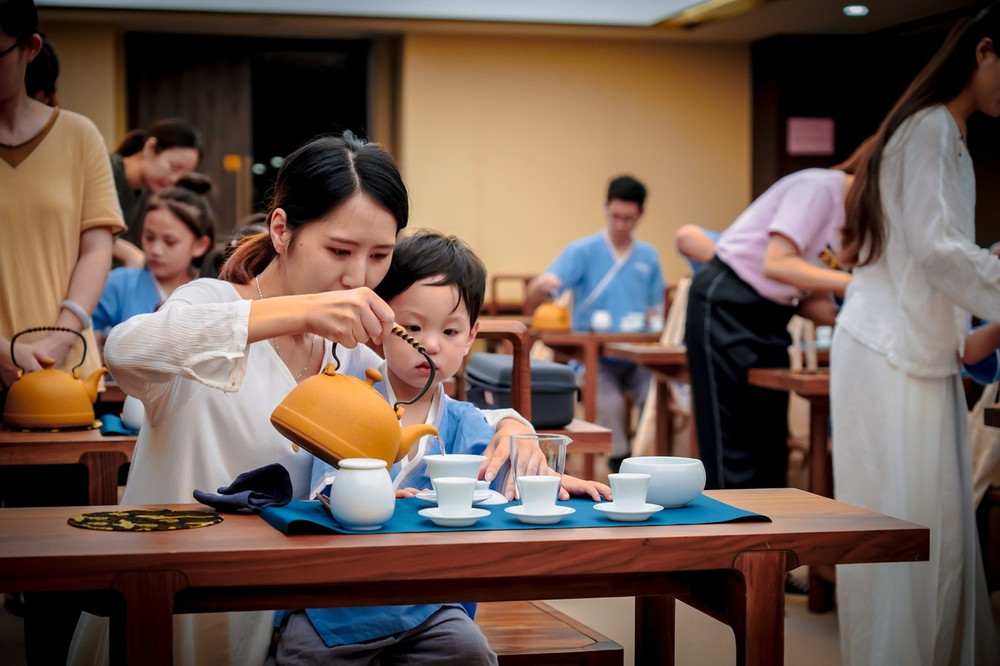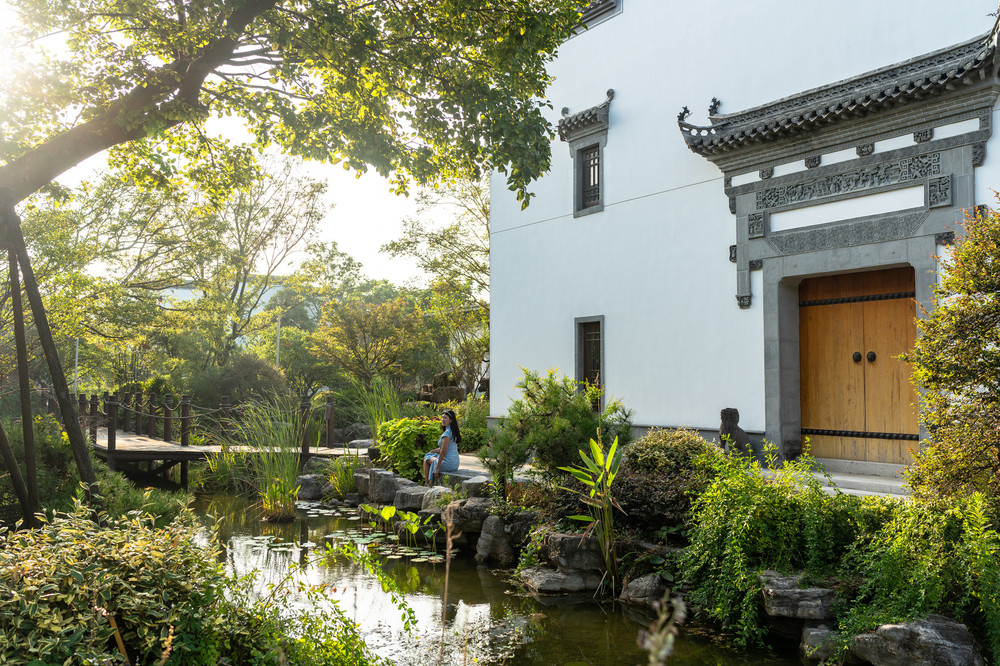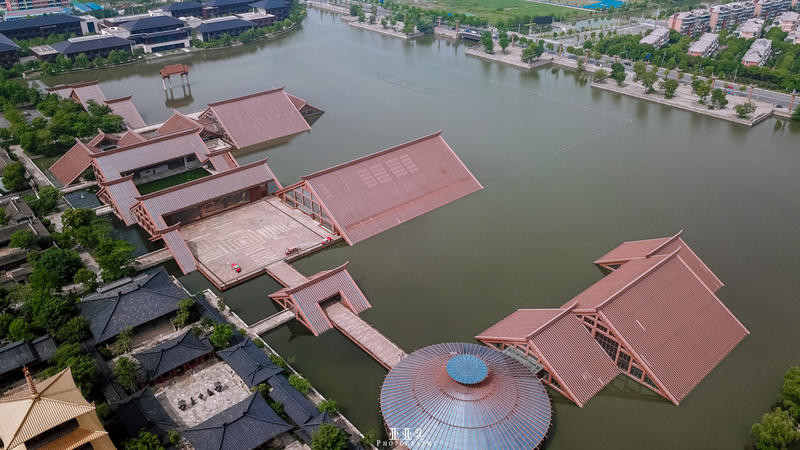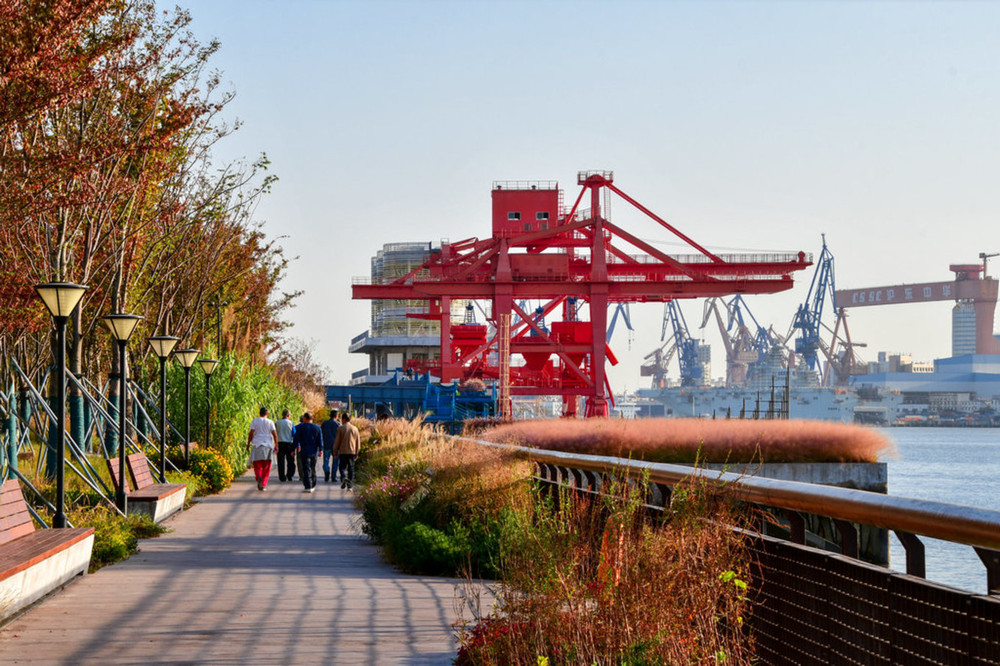Duration: 4 days, Time: May, Average cost per person: 3500 Yuan, Travel companions: Solo traveler, Travel style: Cultural, Free and easy, Cycling. Published on 2022-08-24 22:13.
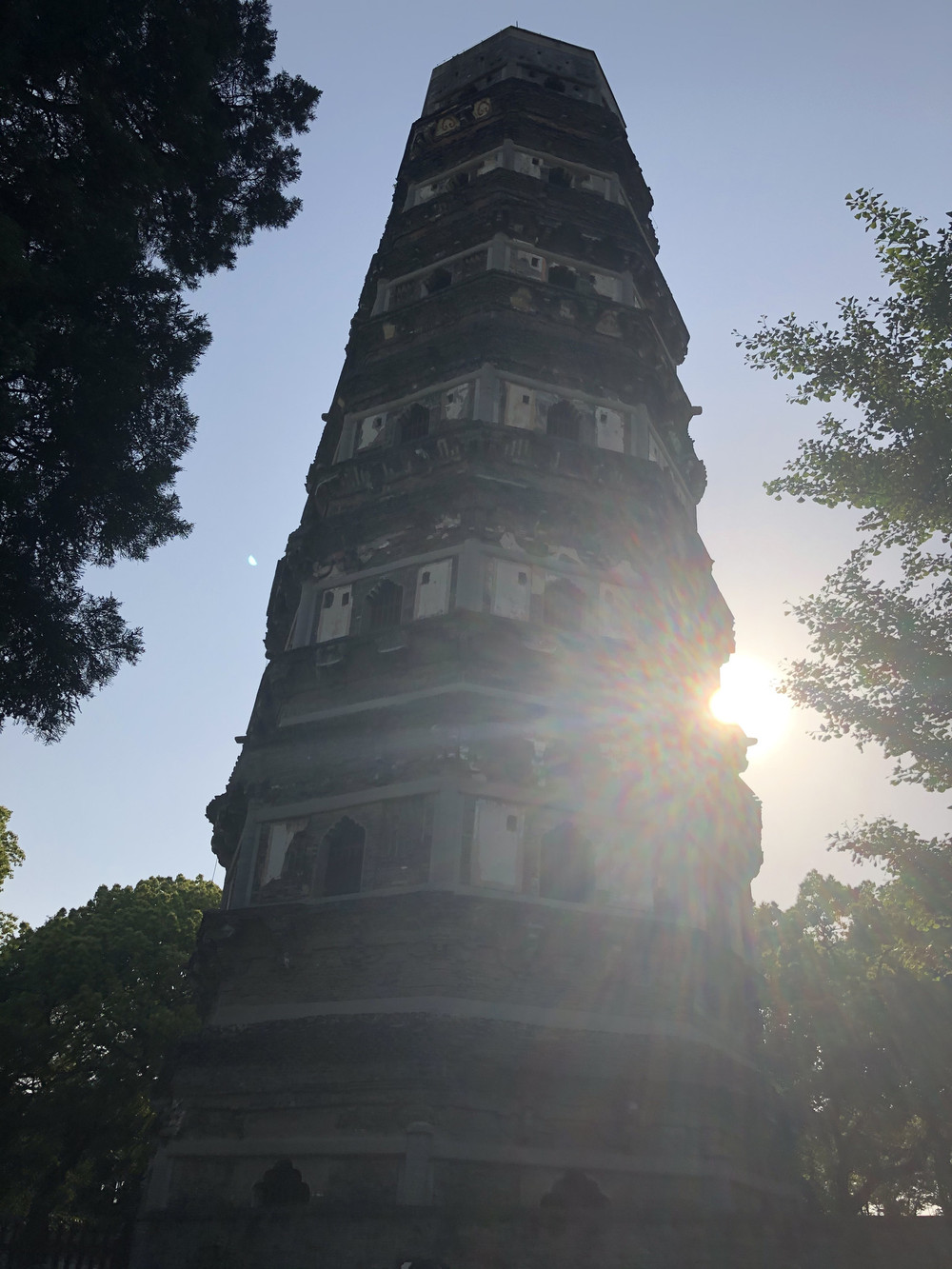
The scenery of Hangzhou is just as people say, and one of the most famous landmarks is undoubtedly West Lake. I originally planned to visit Wuzhen and Thousand Island Lake, but due to time constraints and the considerable distance from Xiaoshan Airport to Thousand Island Lake, it was difficult to make time for a visit. As for Wuzhen, it shares similar views with Zhouzhuang, so since I was planning to go to Zhouzhuang, Wuzhen was no longer under consideration.
Therefore, after landing, I went straight to West Lake. Although it was still early, West Lake was already crowded with people. In this late spring, under the bright sunshine, the lake surface appeared very calm, and the willow branches beside were blown by the wind, with catkins falling piece by piece. Walking by the lake, I felt very calm, and it seemed as if I had forgotten the fatigue of traveling.
The water surface of West Lake is green, much wider than Huizhou West Lake, roughly three to four times larger, as estimated by sight. Standing on one side of the lake, Leifeng Pagoda faintly emerges in front of you. There were many tourists by the lake, with expressions of joy on everyone’s face, all taking pictures happily or interacting with each other, mostly in groups of twos or threes, but there were also quite a few who seemed to be students on a spring outing, forming an entire team.
I walked slowly forward, and soon arrived at Bai Causeway. “The love for the eastern lake is not enough, the green willow shade is Bai Causeway.” Bai Causeway did not give me a very special feeling, perhaps because I came in the wrong season and did not see the best scenery. After passing Bai Causeway, I walked forward and saw Su Xiaoxiao’s Tomb. The poetic ghost Li He did have a poem singing Su Xiaoxiao’s tomb, but what was described in the poem does not seem to be the Su Xiaoxiao’s tomb by West Lake, because Li He was not from Hangzhou, but from Shanxi. So I guess there should be many places to commemorate the famous courtesan Su Xiaoxiao. It’s not just this side.
Not far from Su Xiaoxiao’s tomb is Wu Song’s tomb. Wu Song was a righteous man of the Song Dynasty, a real person, whose specific deeds I have not meticulously studied, but one thing is certain, he is different from the character described in ‘Water Margin’, and the Liangshan Marsh uprising also does not exist.
The beautiful scenery of West Lake is not only about West Lake itself, but also the famous Ten Scenes of West Lake. I visited some of them, including Feilai Peak, Lingyin Temple, and Yue Wang Temple. Feilai Peak does not seem as magical as I remembered, although I learned Wang Anshi’s ‘Climbing Feilai Peak’ when I was young, “On Feilai Mountain, there is a tower a thousand feet high, when the rooster crows, the sun rises. Fearless of the clouds that block the view, because I am at the highest level.” But Hangzhou’s Feilai Peak does not seem as high as described in the poem, let alone ‘thousand feet’, which is a bit disappointing. So I guess Wang Jinggong’s Feilai Peak is not this one.
Lingyin Temple is located inside Feilai Peak, which is the temple where the well-known monk Ji Gong practiced Taoism. When I arrived at Lingyin Temple, the most impressive thing inside was the Thousand Buddha Hall, which is very spectacular, with thousands of Buddha statues in various forms, gentle, smiling, and serious.
Afterward, I arrived at Yue Wang Temple, which is situated atop Qixia Ridge. The statue of Yue Fei within the temple is solemn and dignified, with the four large characters ‘Return My Rivers and Mountains’ inscribed above it, traditionally attributed to Yue Fei himself, exuding a heroic spirit that pierces the sky! “Furious, hair bristling, leaning on the railing, the drizzling rain ceases,” standing before the statue of Yue Fei, I naturally felt the heroic aura he portrayed in ‘Man Jiang Hong,’ even feeling my own hair stand on end!
Further inside, I reached Yue Fei’s tomb, where one can see the kneeling iron statues of Qin Hui, Wang Shi, Zhang Jun, and Wan Qi Xi, a depiction famous from my history textbooks in junior high school! Next, I headed to Leifeng Pagoda, as the sun had significantly descended towards the west. Upon ascending Leifeng PagodaAt that moment, I also happened to see a beautiful woman on the tower, whose appearance and figure could be described as perfect. To use Song Yu’s ‘Rhapsody on the Indulgence of the Eyes’ to describe her would be most fitting: adding a bit would be too tall, subtracting a bit would be too short; applying powder would be too pale; applying rouge would be too red; her eyebrows like green feathers, her skin like white snow; her waist like bound silk; her teeth like contained shells. Since ancient times, Suzhou and Hangzhou have been known for their beautiful women, and indeed, this is true!
Although the scenery was beautiful, standing at a height was quite a challenge for me, someone with a fear of heights, and after just a short while, my feet were already trembling. Missing the Leifeng sunset, I descended the pagoda, which was now close to dusk. I rode my bicycle back to the hotel, passing by the Beijing-Hangzhou Grand Canal, which shimmered under the illumination of lights! The grand canal I had seen in textbooks seemed wider and larger than this. However, from this section of the canal, it was no more than 50 meters wide. But this is the canal, spanning over 1700 kilometers, how much manpower and resources were spent during the Sui Yangdi period! After more than 1500 years of wind and rain, the canal seems to have become increasingly calm!
I walked alone and aimlessly along the ancient streets beside the canal. These streets were not as noisy and bustling as the Yangshuo Old Street in Guilin. Here, it could be considered extraordinarily quiet. Only a few scattered tourists were wandering about. But the scenery was not as stunning as imagined, and compared to other ancient streets, it was much the same. I walked along until I reached the end of the old street, then turned around and headed back to the hotel.
I only stayed in Hangzhou for two days, and on the third day around 7 in the morning, I hurriedly left Hangzhou for Suzhou. On this journey, I encountered a lovely girl, and since we were on the same path, I boldly asked her where she was going. She said she is from Hangzhou. As she had never been to Suzhou, she took advantage of the May Day holiday to go there for a visit. She originally wanted to go to the Suzhou Gardens as well, but as it was too late and she couldn’t book tickets there, she had to give up. In the end, she had to choose to visit the nearby Lion Grove. As for me, I was going to the Humble Administrator’s Garden, so we had to part ways. The first experience of chatting up a girl was not boring at all!
I followed slowly behind the team and entered the Humble Administrator’s Garden on my own. In fact, gardens are the private gardens of high officials and nobles in the Ming and Qing dynasties. There are quite a lot of gardens like this in Suzhou. The Humble Administrator’s Garden is the most outstanding representative and epitome. It is famous all over the world not only because of its beautiful scenery, but also because a very important reason is that its owners in different dynasties are all famous figures in Chinese history. Li Hongzhang, Cao Xueqin, Hong Xiuquan and other important figures in Chinese cultural history have stayed in it for a long or short time.
Although the garden is bustling with people, it still gives people a very leisurely feeling. Looking inside from the entrance, there are many trees standing densely and luxuriantly. As I had walked a really long way in the past two days and was extremely tired, when I saw a stone bench in front, I quickly occupied it and sat down. Not far in front of me were an elderly couple. They seemed to be over seventy years old. They just sat quietly without speaking, but there were sweet smiles on their faces. ‘The Wu dialect sounds charming when drunk. Whose old man and woman with white hair are they?’ I was moved by this scene in front of me. I hoped that time would stay at this moment forever and not move forward anymore. Slowly, slowly, I sat on the stone bench and almost fell asleep leaning against the guardrail beside me. At this time, the setting sun was slowly moving westward. I walked out of the garden.
At this moment, a poem naturally emerged in my mind, ‘Suzhou is called Hanshan Temple. The bell rings at midnight and reaches the passenger ship.’ The roads in Suzhou urban area are still quite complicated. They are completely incomparable to Hangzhou, whose transportation can be compared to that of Guangzhou. I walked a long way around but still couldn’t find the way to Hanshan Temple. And it seems that Hanshan Temple will close at 4:30 in the afternoon. Therefore, I had to give up and hurriedly rushed to HuHuqiu Mountain Park is not high, but its history and culture are very long. It seems to have a great connection with what is described in ‘Annals of Wu and Yue’. The most core scenic spot inside is the Leaning Tower of Huqiu. I have forgotten its specific inclination. It seems to be about 2.58 degrees. I think the tower body looks very old and seems to be similar to the old Leifeng Pagoda. Against the backdrop of the setting sun, the ancient leaning tower makes people feel more mysterious. It makes people can’t help but peek at what is hidden inside this tower body. For safety reasons, of course, this ancient tower cannot be approached. Passing by the tower, one can see Sun Wu’s military training platform and cultural relics related to Wu Zixu, and there is also the sword-testing stone of Gan Jiang and Mo Ye. This sword-testing stone is neatly split in half from the middle, which shows how sharp Gan Jiang and Mo Ye are.
On-site, guides were providing detailed introductions to the tourists. I spent approximately over an hour there, making sure to explore every nook and cranny, fearful that I might miss something. Only after mentally confirming that I had seen all the places I wished to visit did I leave with a sense of relief. By this time, the sun had already sunk further west, reaching the base of the mountains. Glancing back at the scenery, it seemed to whisper its long-standing history, especially the thrilling tale of King Wu and his city of Helu. Closing my eyes and holding my breath, I carefully moved forward, not wanting to miss even the slightest detail.
The next morning, I hurriedly took a taxi, switched to the subway, and then another taxi to rush to my next destination, Zhouzhuang. The closer I got, the more nervous I became, with images from my elementary school textbooks about Zhouzhuang flooding into my mind. Would the scenery of Zhouzhuang match the descriptions from my textbooks? With doubts in my heart, and considering it was a May Day holiday, the place was extremely crowded. By the time I reached the entrance of Zhouzhuang, I was quite hungry and entered a restaurant to order a Wan San pig’s trotter and a plate of stir-fried clams with chives. However, sitting across from me was an odd individual who ordered six dishes by himself and several bottles of beer, eating as if no one else existed. He appeared rather vacant. I quickly finished my meal and left, feeling somewhat apprehensive about the possibility of him causing trouble after drinking.
After eating, I entered Zhouzhuang alone through the main gate. As soon as I stepped in, the scenery of lakes and mountains greeted my eyes. The sense of history in Zhouzhuang seemed even older compared to the Humble Administrator’s Garden. Walking through this ancient water village, my pace gradually slowed. I moved forward gently, wary that any loud noise might shatter the distant silence. Looking ahead, the ancient stone arch bridge was almost identical to the one described in my textbooks. The water under the bridge wasn’t crystal clear due to the reflection of the trees along the banks, making it overly green. There were many yachts rocking on the water, and it seemed that there were particularly many people queuing to board the boats here. Seeing the overly crowded crowd, I did not stop and continued to move forward.
Not far ahead was the former residence of the richest man in Jiangnan, Shen Wan San. Right in the center of the residence was a statue of Shen Wan San, with what seemed to be treasure basins on either side. This residence was not as large as the gardens of Suzhou, with many tourists continuously throwing coins into the treasure basins, seemingly praying for blessings. As the crowd around here grew, I quickly squeezed out, and it was densely packed with people around it. The roads in Zhouzhuang were also very narrow, and I followed the flow of people, queuing and walking for a long time before finally reaching a relatively spacious open area. I walked around the manor for about a week, revisiting some places over and over, still reluctant to leave. By the time I came out, it was already around 5 p.m.
Originally, this May Day trip was supposed to end at Zhouzhuang. However, my classmate Chen Wu insisted that I should see the night view of the Bund. I took his words and immediately rushed to Shanghai by express train after leaving Zhouzhuang. Although it is already summer, somehow I feel rather chilly. The journey to Shanghai this time is very short, taking less than 40 minutes. I took a bus to a nearby subway station and then took the subway to the Huangpu River. After exiting the subway station, near the World Trade Center, there are more people. The night view is resplendent under the illumination of lights. Probably because it is very close to the river or the sea. SittingWalking towards the Oriental Pearl Tower, I find myself on a nearly deserted road, the clock ticking close to 10:30. The solitude is palpable, yet as I draw near to the Huangpu River, the scene transforms into a vibrant and bustling one. Shanghai’s ten-mile foreign concessions truly live up to their reputation, their splendor glittering before my eyes. It rivals the night view of Victoria Harbour in Hong Kong, arguably the finest in all of China.
The Oriental Pearl Tower and the building opposite it create a harmonious spectacle, their lights playing off each other in a mesmerizing dance. It’s a breathtaking sight. Standing by the river, the breeze cooling my face, I feel a sense of refreshment and clarity. The song ‘Shanghai Bund’ comes to mind, its lyrics capturing the poignancy of time’s relentless march and the solitude of heroes.
As the light show concludes, the city slips back into its quiet solitude, a stark contrast to the lively scene just moments ago. The transition from the heights of prosperity to the depths of loneliness is but a fleeting moment. Exhausted from the day’s journey, I retreat from the city’s clamor and return to the solitude of my hotel, marking the end of another day.






